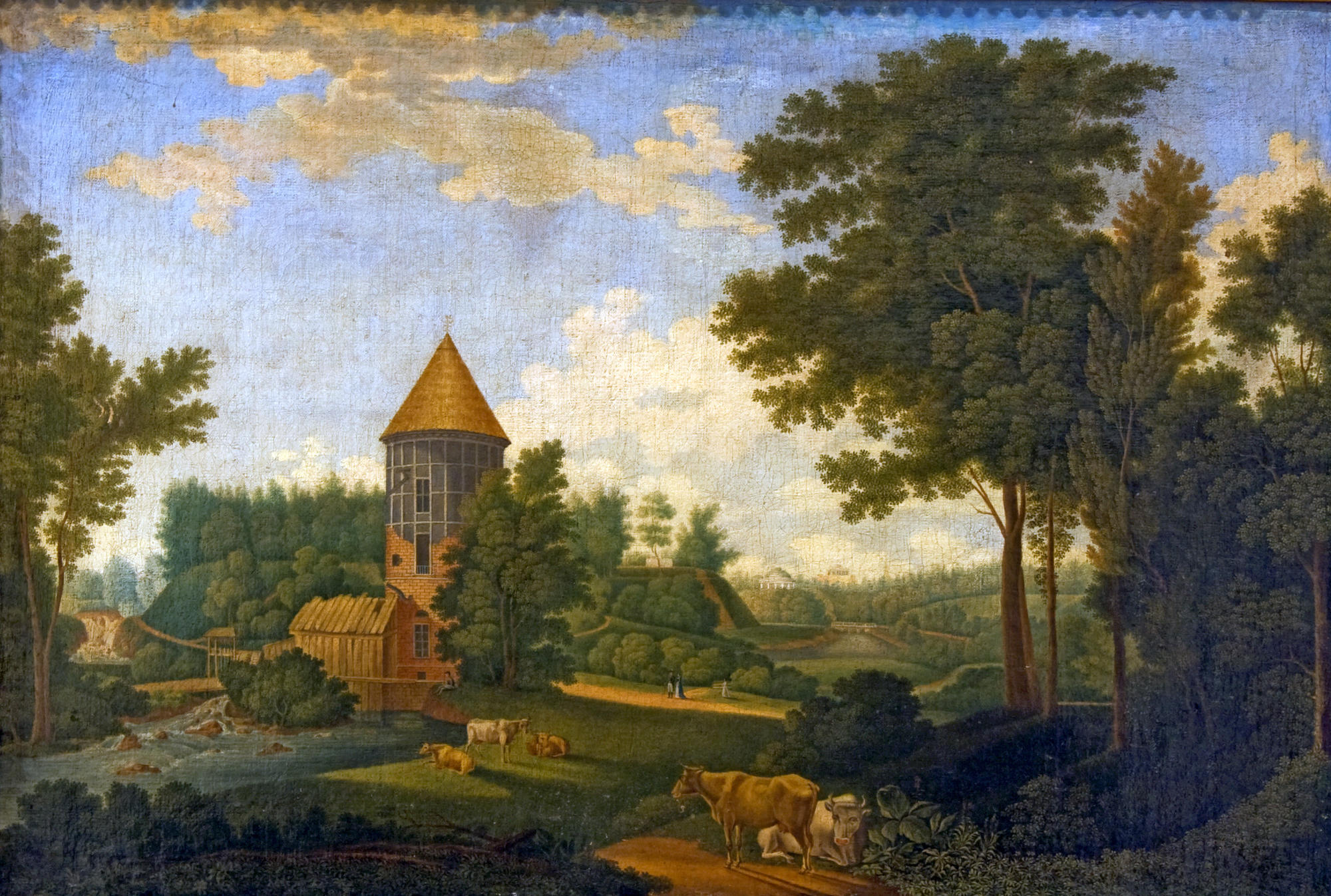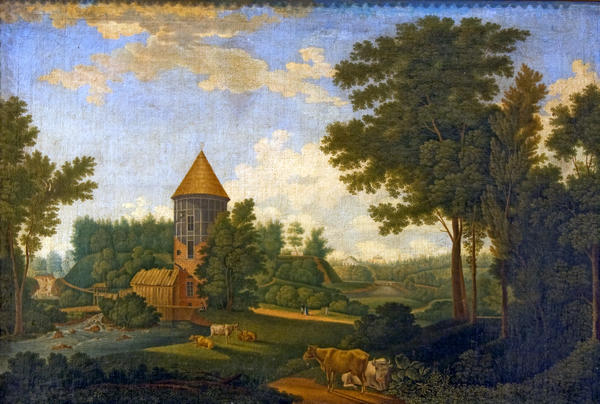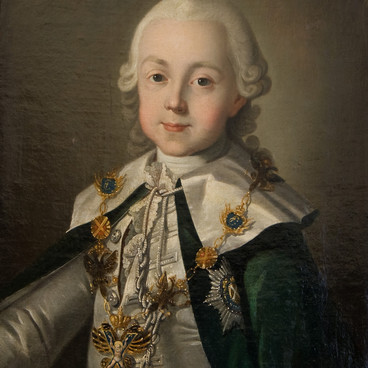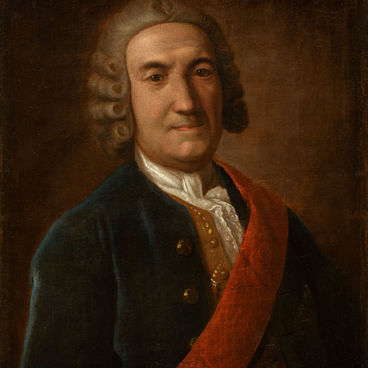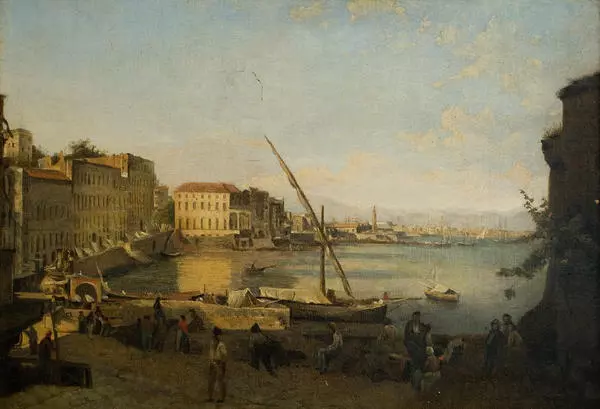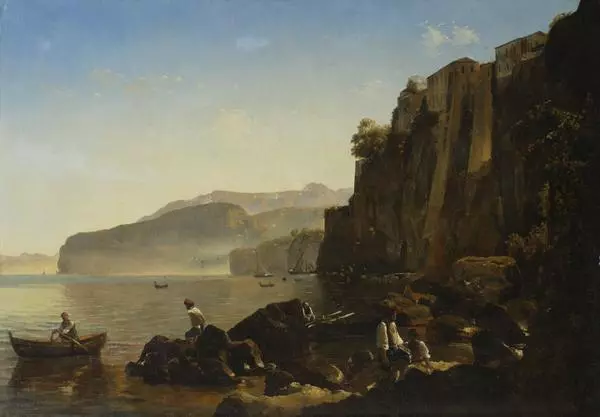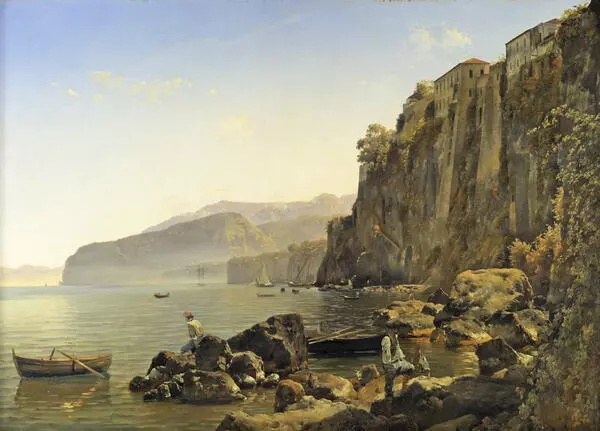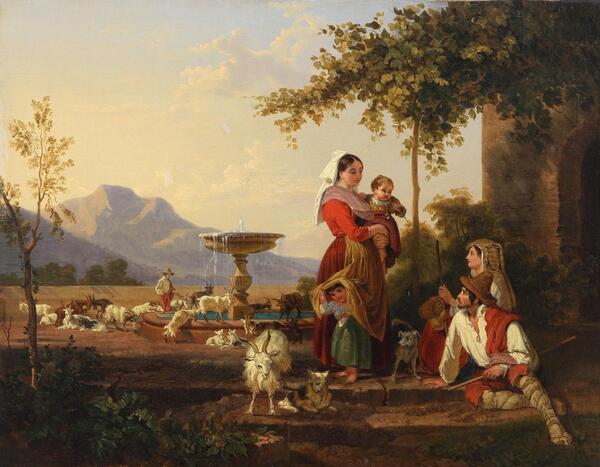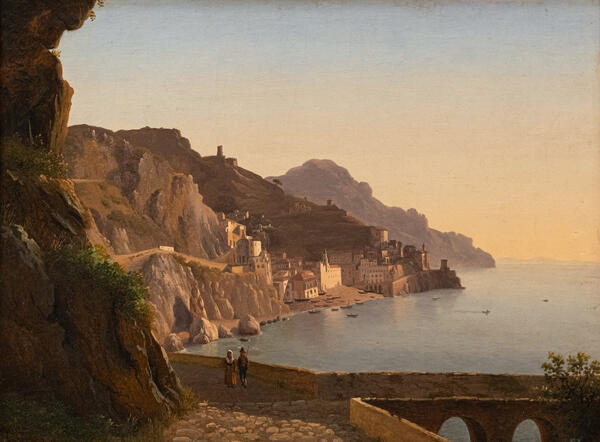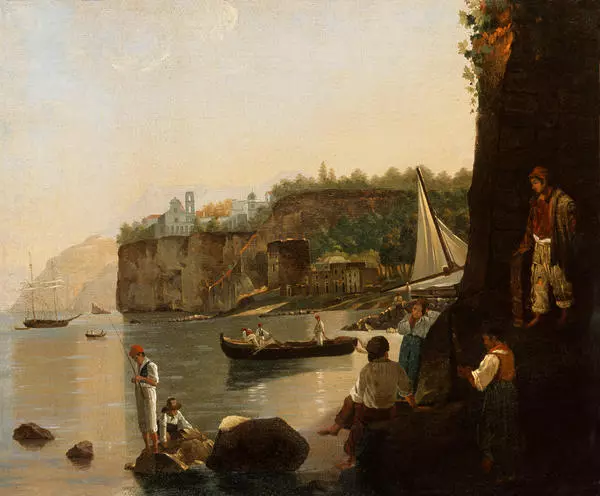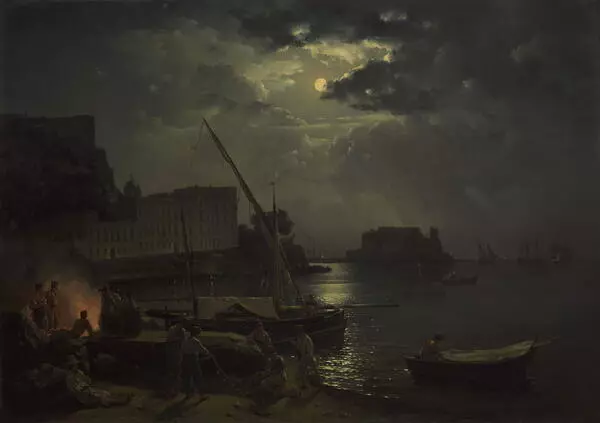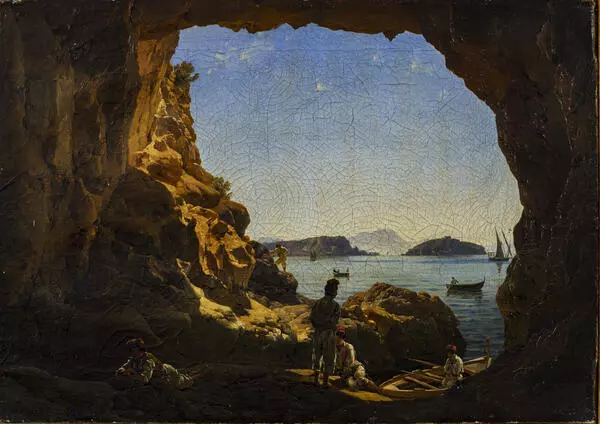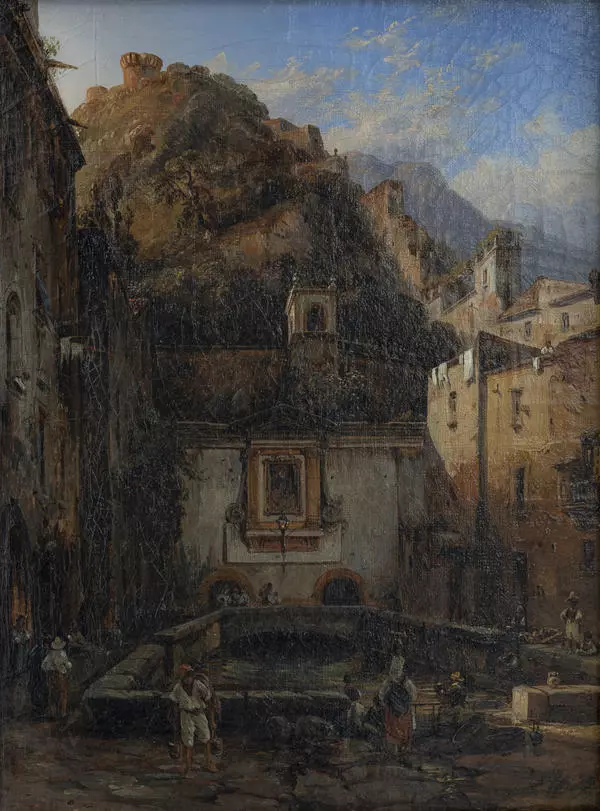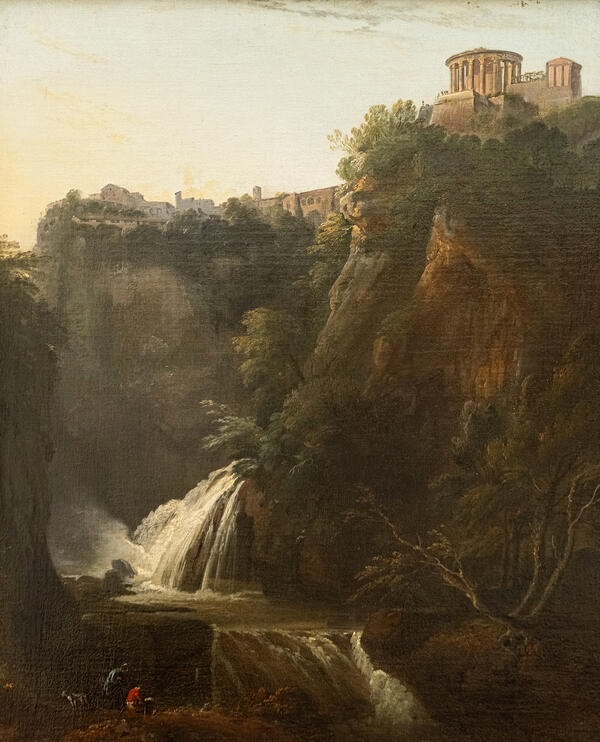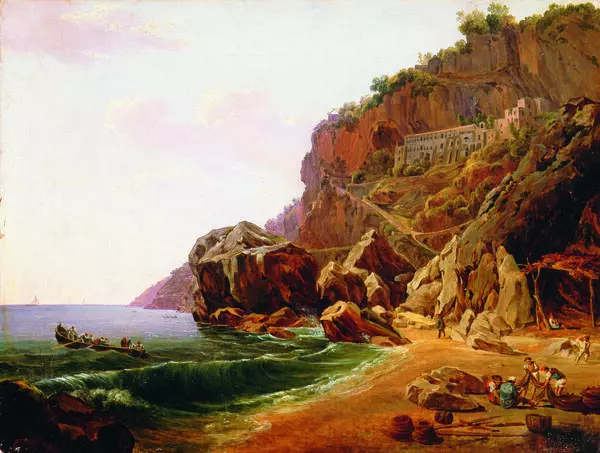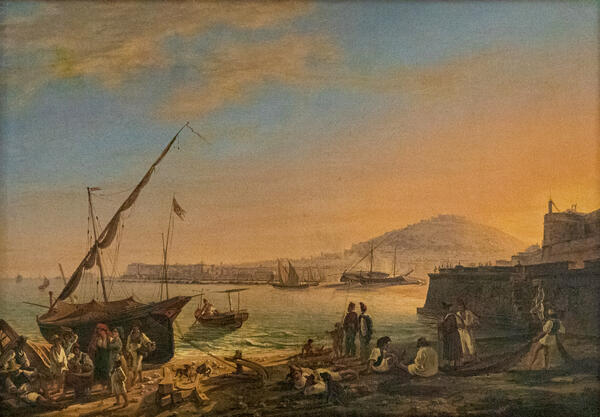The founding father of Russian landscape painting Semyon Shchedrin created the painting Mill and Peel Tower in Pavlovsk in 1792. He depicted Pavlovsky Park in the suburbs of Saint Petersburg. The artist painted the landscape from life and then put the finishing touches in his studio. The painting is made in the classicism style popular in the late 17th – early 18th century. By the rules of the genre, the composition of the landscapes resembles a theatrical stage: the trunks of the trees look like the wig flats, and the subjects in the background – like the scenery.
Semyon Shchedrin chose warm hues for the color palette: ochroid-brown, olive and mustard tones. The artist depicted a sunny summer day. The light-blue sky creates an effect of infinite space.
The painting resembles an idyllic landscape. Several cows can be seen in the foreground in the shade of the trees, and the distance – small figures of people. In pastoral landscapes of the 18th century, artists depicted animals and passers-by to animate the composition of a painting. Such figures in the background are called staff age.
The artist depicted the round Peel Tower in the center of the canvas. In the 18th century, a sawmill stood in the place of the pavilion activated by the rush of water. This is how the tower got its name (in Russian peel is to saw). Vincenzo Brenna, an Italian artist and decorator, designed the tower, which was erected in 1795-1797. He was the court architect of the emperor Paul I. The tower’s roof was covered with thatch, and a wooden staircase made of round birch logs went around the walls to the second floor, where a cozy salon and a library were situated.
The artist Pietro Gonzaga painted the walls of the pavilion. The painting imitates half-ruined stonework, so the building resembles ancient ruins. The Peel Tower was erected on the left bank of the Slavyanka River in a remote part of Pavlovsky Park. A faked watermill and a summer bathhouse were at its footing, and a wooden bridge was nearby. The splash of the waves and the sound of the mill wheels complemented the countryside idyll depicted by Semyon Shchedrin.
The artist was born in the family of the soldier of Preobrazhensky Life Guard Regiment. In 1759, Semyon Shchedrin became a student of St.-Petersburg Academy of Arts. One of his paintings won a gold medal, so he was entitled to a stipend for continuing his education abroad. The young artist went to Rome, where he embraced the ideas of classicism. In 1776, Semyon Shchedrin became a professor of landscape painting in the Academy of Arts. He depicted numerous landscapes of parks and palaces of St.-Petersburg and its suburbs.
Semyon Shchedrin chose warm hues for the color palette: ochroid-brown, olive and mustard tones. The artist depicted a sunny summer day. The light-blue sky creates an effect of infinite space.
The painting resembles an idyllic landscape. Several cows can be seen in the foreground in the shade of the trees, and the distance – small figures of people. In pastoral landscapes of the 18th century, artists depicted animals and passers-by to animate the composition of a painting. Such figures in the background are called staff age.
The artist depicted the round Peel Tower in the center of the canvas. In the 18th century, a sawmill stood in the place of the pavilion activated by the rush of water. This is how the tower got its name (in Russian peel is to saw). Vincenzo Brenna, an Italian artist and decorator, designed the tower, which was erected in 1795-1797. He was the court architect of the emperor Paul I. The tower’s roof was covered with thatch, and a wooden staircase made of round birch logs went around the walls to the second floor, where a cozy salon and a library were situated.
The artist Pietro Gonzaga painted the walls of the pavilion. The painting imitates half-ruined stonework, so the building resembles ancient ruins. The Peel Tower was erected on the left bank of the Slavyanka River in a remote part of Pavlovsky Park. A faked watermill and a summer bathhouse were at its footing, and a wooden bridge was nearby. The splash of the waves and the sound of the mill wheels complemented the countryside idyll depicted by Semyon Shchedrin.
The artist was born in the family of the soldier of Preobrazhensky Life Guard Regiment. In 1759, Semyon Shchedrin became a student of St.-Petersburg Academy of Arts. One of his paintings won a gold medal, so he was entitled to a stipend for continuing his education abroad. The young artist went to Rome, where he embraced the ideas of classicism. In 1776, Semyon Shchedrin became a professor of landscape painting in the Academy of Arts. He depicted numerous landscapes of parks and palaces of St.-Petersburg and its suburbs.
